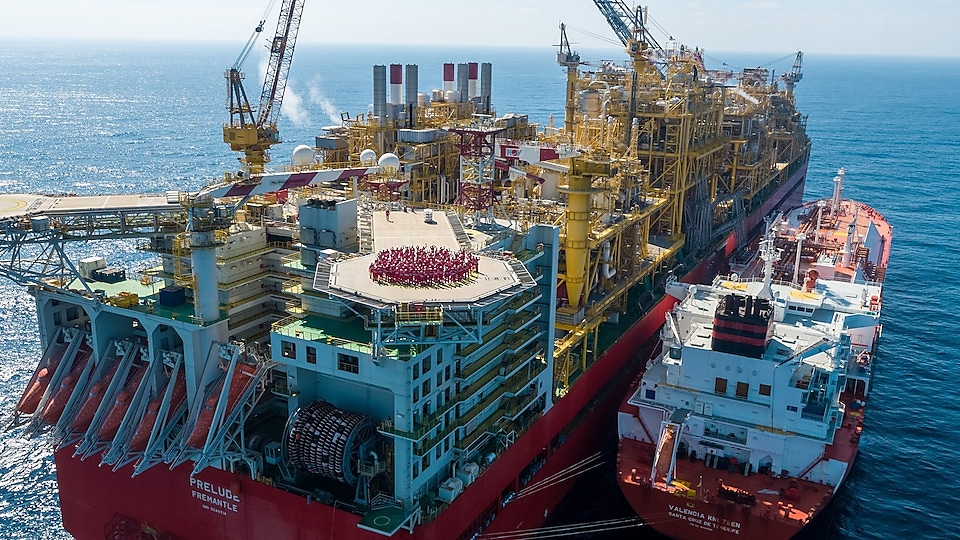Shell PLC’s LNG Canada export project in British Columbia plans to start building its proposed second phase with natural gas-powered turbines and switch to electricity as more renewable power becomes available, a top executive said, a decision that means the expansion project will initially generate high greenhouse gas emissions.
LNG Canada, in which Japan’s Mitsubishi Corp owns a 15% stake, is set to be Canada’s first liquefied natural gas (LNG) export terminal. The first phase is expected begin shipments around 2025.
With global demand for natural gas from sources other than Russia accelerating after its invasion of Ukraine last year, LNG Canada is weighing whether to build by 2030 a second phase to double annual capacity to 28 million tonnes.
LNG Canada now plans to initially build Phase 2 with natural gas-powered turbines and switch to electric motors as more power becomes available, pending a final investment decision, CEO Jason Klein told Reuters on Friday.
LNG Canada has previously described this approach as only one of the options it was considering.
The company’s move to only gradually switch to renewable electricity risks means the Phase 2 project would produce initially high emissions that would run up against ambitious emissions reduction goals set by the British Columbia and federal governments.
Running the turbines using B.C.’s hydro electricity to cool the gas to liquid for shipping would limit emissions, but requires hundreds of kilometers of new transmission lines to reach the province’s remote northwest coast.
“We can’t do an immediate and wholesale electrification of the plant and the pipeline. It’s not possible today because the transmission infrastructure just isn’t there,” Klein said, adding that LNG Canada is discussing with both governments and utility BC Hydro when lines may be in place.
“If the power was there today it would be a pretty straightforward decision.”
LNG Canada’s dilemma illustrates the practical challenges of a global push to electrify buildings and vehicles to curb climate-warming emissions. The move requires the world’s grid to generate significantly more power and build infrastructure to deliver it.
Klein said LNG Canada had not directly asked for financial assistance from either government to build transmission lines and electrify Phase 2, and is still assessing the project’s economics.
“I wouldn’t expect to be able to attract capital to a project that’s not competitive,” Klein said.
LNG Canada has full environmental permits from both governments to use natural gas turbines for Phase 2, making it unclear what leverage governments have to force electrification.
Government cooperation is critical to constructing transmission lines, however.
“It would be difficult to make an investment on this scale without some level of alignment and the support of host governments,” Klein said.
CLIMATE GOALS
Russia’s invasion of Ukraine upended gas deliveries to Europe, prompting a scramble for alternative supplies. Some of Canada’s allies, including Germany and Japan, have asked Prime Minister Justin Trudeau to play a major role in increasing LNG supplies.
Ottawa wants to develop a Canadian LNG industry to boost the economy, but has also pledged to cut emissions by at least 40% by 2030.
The terminal, which LNG Canada says would have the lowest emissions intensity in the world, will emit 4 million tonnes of greenhouse gases annually with both phases based on natural gas power. That’s the equivalent of 0.6% of Canada’s total 2020 emissions.
Electrifying Phase 2 is expected to be more expensive than using natural gas. But buyers may pay more for LNG produced with lower emissions, Klein said, noting that some buyers already purchase carbon offsets for LNG cargoes.
He said he is satisfied the province of B.C. can generate enough electricity for the terminal – the issue is how quickly it can build new transmission lines and how that would impact Phase 2 costs.
Mora Scott, a BC Hydro spokesperson, said the utility expects to have more than enough power until the end of the decade and is planning for scenarios including rapid growth from mining and LNG development.
Future LNG projects need to fit within B.C.’s climate goals, the province’s ministry of energy said in a statement, while federal Environment Minister Steven Guilbeault said it was up to B.C. to decide what to do with its electricity.
LNG production accounts for only 15% of the greenhouse gases associated with it, and the rest enters the atmosphere when consumers burn the gas, suggesting the governments’ emphasis on electrification of the terminal is misplaced, said Bruce Robertson, an analyst at the Institute for Energy Economics and Financial Analysis, an independent energy research group.
“This is a classic example of how perverse carbon accounting is,” he said. “The LNG industry in Canada is conveniently excluding where most of the emissions occur.”
Source: Hellenic Shipping News





